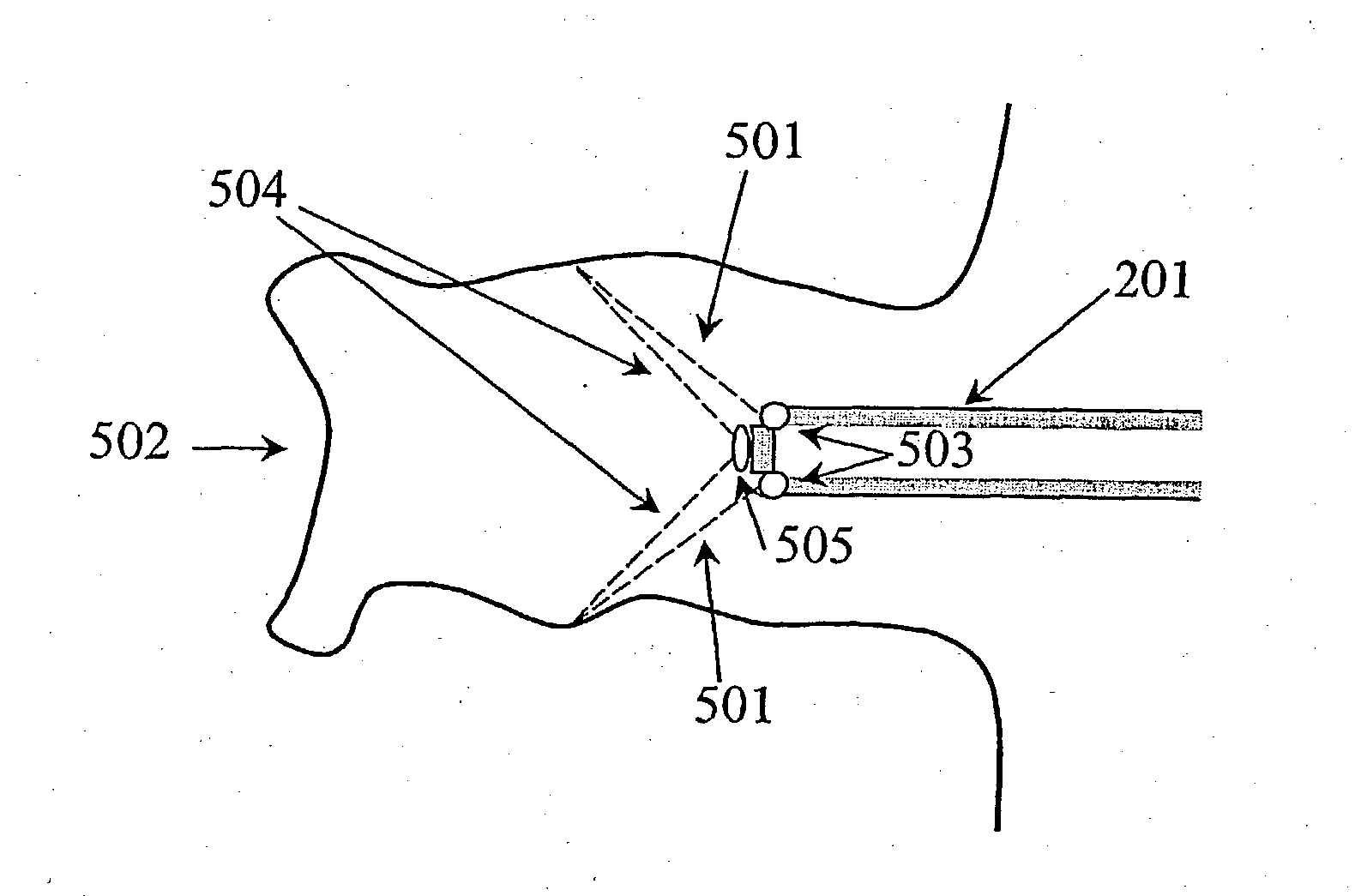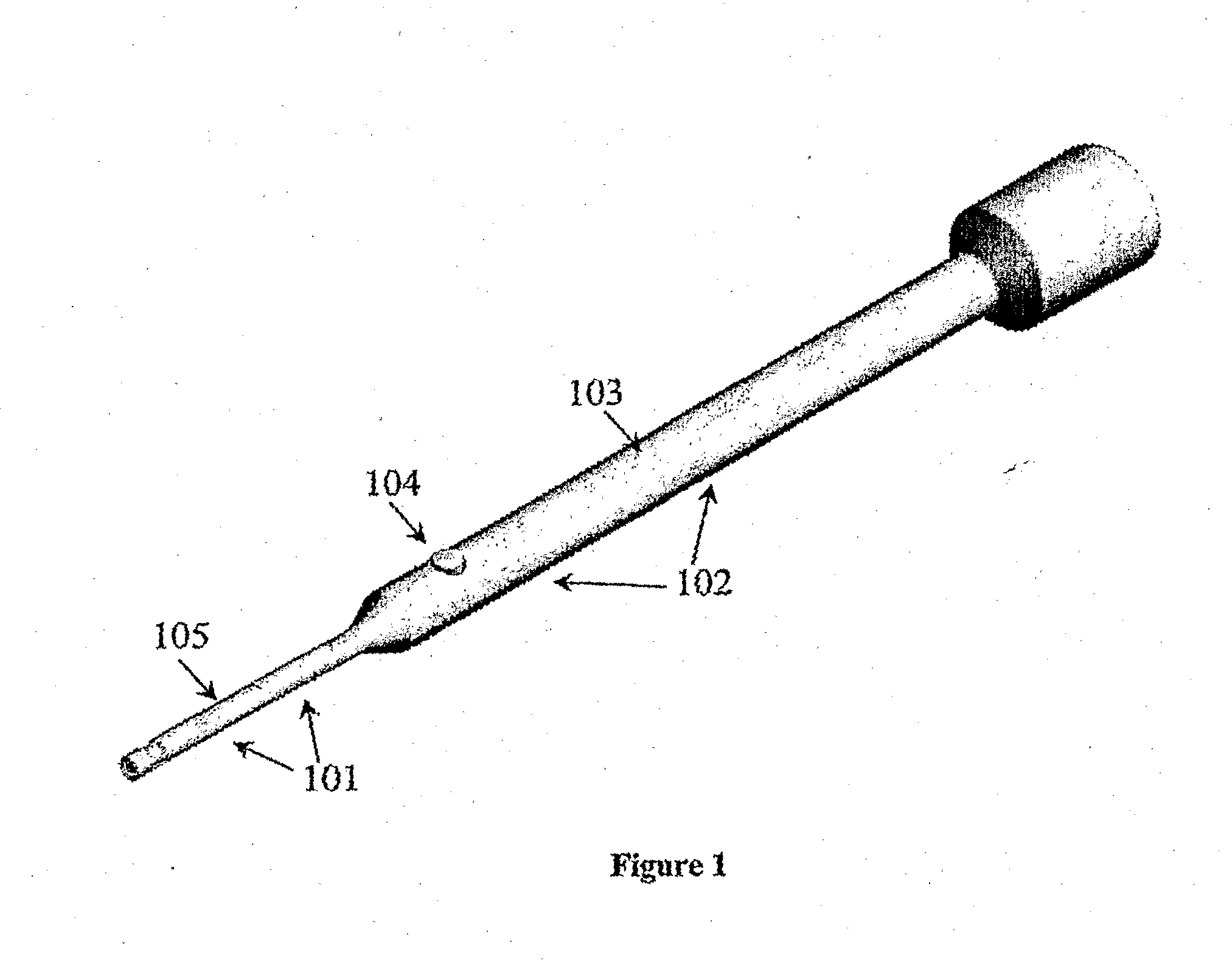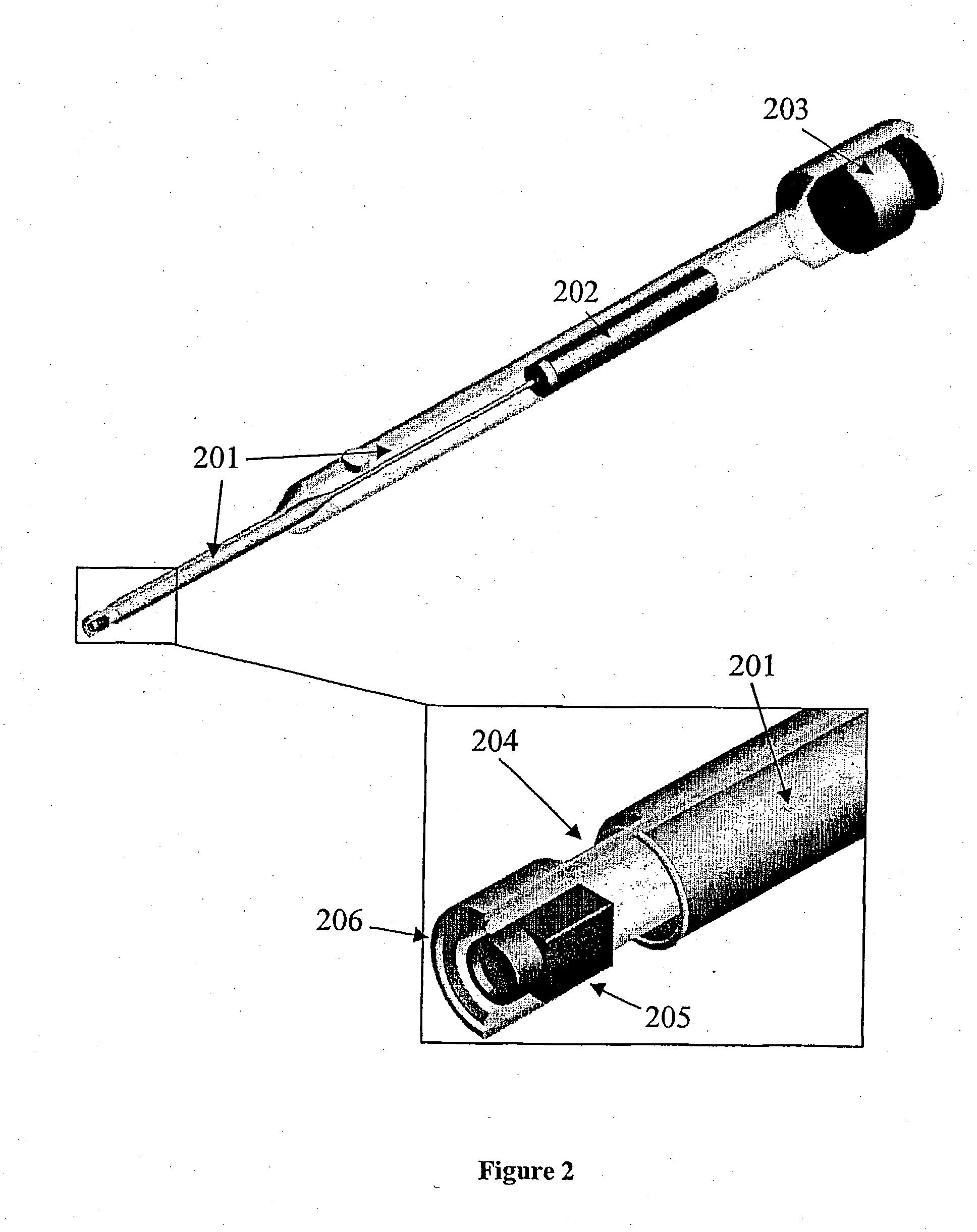Method and apparatus for three-dimensional optical scanning of interior surfaces
- Summary
- Abstract
- Description
- Claims
- Application Information
AI Technical Summary
Benefits of technology
Problems solved by technology
Method used
Image
Examples
Embodiment Construction
[0055] FIG. 1 to FIG. 4 illustrate two preferred embodiments of the invention. The first part 101 of the scanner is the probe, which is inserted into the cavity. The second part 102 is a handle. The scanner in FIG. 1 and FIG. 2 comprises a cover 103, a scan button 104, a disposable cover 105, light guides 201, a light source 202, a position sensor 203, optics and mirrors and / or prisms 204, a camera 205 and a protector / collision detector 206. A rotating mirror and / or prism with a micro motor 301 is also added to the component list in the embodiment shown in FIG. 3 and FIG. 4. As illustrated in FIG. 5, the scanner works by projecting a structured light pattern 501 onto the interior surface of the object 502. The camera 503 acquires images of the reflection 504 of the light pattern from the surface. By locating the light pattern in the images, the corresponding 3D surface positions can be reconstructed applying well-known projective geometry. The scanner only scans limited parts of the...
PUM
 Login to View More
Login to View More Abstract
Description
Claims
Application Information
 Login to View More
Login to View More - R&D
- Intellectual Property
- Life Sciences
- Materials
- Tech Scout
- Unparalleled Data Quality
- Higher Quality Content
- 60% Fewer Hallucinations
Browse by: Latest US Patents, China's latest patents, Technical Efficacy Thesaurus, Application Domain, Technology Topic, Popular Technical Reports.
© 2025 PatSnap. All rights reserved.Legal|Privacy policy|Modern Slavery Act Transparency Statement|Sitemap|About US| Contact US: help@patsnap.com



